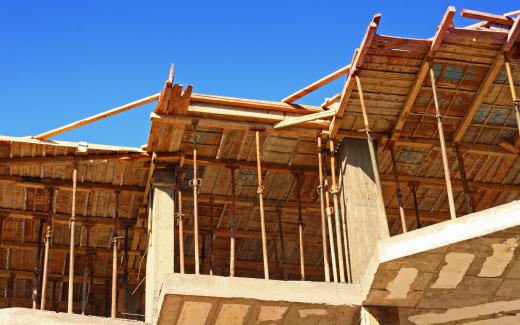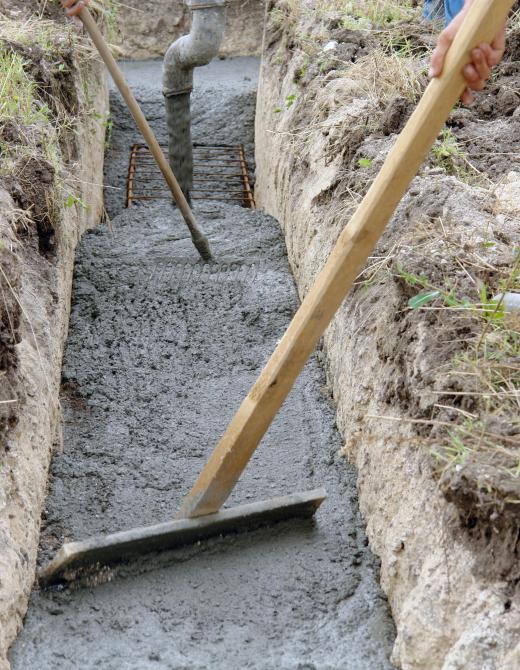Shuttering and formwork are both terms used to describe the process of creating a mold in which concrete can be poured and contained as it hardens. Shuttering usually refers to the process of using plywood to form the mold, while formwork is something of a broader term that is used to denote the forming process using a wide variety of materials. Shuttering and formwork both accomplish the same essential task, but the materials used to accomplish this task can vary. Sometimes there is no differentiation made between the two terms, and in some cases, shuttering may be considered one specific type of formwork.
Projects of all different sizes will need to employ shuttering and formwork techniques. Large scale building projects are likely to use a variety of different types of formwork, though shuttering is perhaps the most popular because it is easy to use and it can be built in such a way that a significant amount of concrete can be poured at once. Using plywood for shuttering is also relatively inexpensive, especially when the plywood can be reused. A special grade of plywood is necessary for shuttering and formwork; the plywood must be water-resistant, as many concrete projects are performed outdoors.

Both shuttering and formwork in its various forms will be supported by falsework. This term refers to poles, stabilizers, or other units that keep the shuttering or formwork in place as the concrete dries. Some shuttering and formwork is temporary and can be taken down once the concrete sets, but some of it is permanent, in which case the falsework will be removed once the concrete sets and the shuttering or formwork will remain in place permanently.

An example of formwork that does not necessarily use shuttering is the construction of a concrete sidewalk. Instead of using timber to create the mold, metal beams known as roadform can be used. This heavy metal beam will feature one flat face against which the setting concrete can be poured to make a clean edge. Connecting tongues and grooves will be featured at either end of the roadforms so more than one metal form can be attached together. This creates a longer form for larger projects. Sections of roadform can also be stacked and pinned together to create taller structures, though the process can become difficult with larger projects because the pieces of roadform can be quite heavy; some builders prefer to use plywood shuttering instead.
